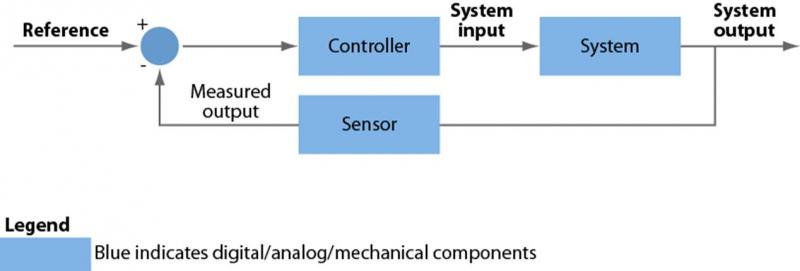SDN, Cloud, And Automation Need A Controller, System, And Sensor
After Hurricane Sandy forced the closure of the NYSE, the market opened up a week ago Wednesday morning with Riverbed’s stock price plunging 20%, while some financial analysts downgraded the company from “hold” to “underperform.” The financial institutions felt that Riverbed’s WAN optimization market was commoditizing and viewed its acquisition of OpNet for $1 billion as a company looking to enhance its monitoring revenue stream, Cascade (Mazu), and Shark (CACE) products. That might be true, but it’s an insignificant variable in Riverbed’s strategy. What they missed, and what many in the industry have continued to disregard, is the value of monitoring, one of the three components needed for a closed loop system (AKA cloud). Public or private clouds require a system that can automatically interweave an abstracted set of resources as needed and bill per use.
One of the main areas inhibiting the cloud has been the network and its inability to act like a virtual network infrastructure. Forrester defines VNI as:
A network that: 1) leverages and balances workloads between virtualized and physical infrastructure; 2) acts as a vertically integrated Layer 2 to Layer 7 module within the infrastructure; 3) creates a fabric of horizontally interconnected components; 4) automates and orchestrates the infrastructure to deliver the right services for each user; and 5) allows management by business units.
Thus, a large amount of focus in the industry over the past 18 months has been on software-defined networking (SDN) and the ability to automate and orchestrate the network to deliver the right set of services for the business. Consequently, automated infrastructures have to model after a closed loop system. Modern aircraft’s fly-by-wire is architected on closed loop systems, which are made up of three components:
- Controller. This component combines the analytics, boundary conditions, key decision triggers, and governance to produce a corrective output to the system. In the network, this could be the orchestration system, OpenFlow controller, management systems, or any combination.
- System. This is the intertwining and orchestration of all the components — switches, routers, load balancers, WAN optimization controllers, and firewalls — with functions like quality of service, security policies, failover, and new services.
- Sensor. This is a set of monitors and probes to measure the performance of the system. These feed fault, configuration, traffic, security, and performance information into an analytical component. The data collection and monitoring locations will be directed by the required metrics.

The technology industry and Wall Street have been overly mesmerized and irrational about developments in the system arena. Besides all the hoopla around virtualization and cloud, the market exploded with Beatles-like hysteria with VMware’s $1 billion purchase of Nicira. You would have thought John Lennon had been resurrected and reunited with the Beatles at VMworld or that Kim Kardashian was looking to date infrastructure and operations professionals. At the time, Nicira didn’t even have a generally available product. Even Brocade’s acquisition of Vyatta, virtualized networking components, garnered outlandish articles about the movement toward software-defined networking.
Don’t get me wrong. I&O professionals should be figuring out how to evolve their current network to a programmable one, but the new architecture will remain idle unless I&O professionals create a Layer 2 through Layer 7 visibility fabric to feed the controller so it can make the right adjustments to the system. This visibility must come from more than a few span ports, switches sending SNMP traps, or placing a few probes on some links. It has to be just a sophisticated set of information coming in from Layer 2 through Layer 7 devices balanced with appropriate metrics and analytics. This is why Riverbed’s acquisition of OpNet makes sense. In the short term, it will boost revenue, but it’s a brilliant move to enable business-driven infrastructure in the long term. As I&O professionals deal with a much more fluid environment of users, data, and applications, we’ll start to see more solutions like Riverbed’s tied together with monitoring aggregation switches from Anue Systems, Gigamon, and others.
The vendors aren’t the only ones who should be thinking about investing in the three components to a closed loop system. Infrastructure and operations personnel should create a balanced approach too. Thus, how would you rate your monitoring capabilities? Are you tacking too much into system and management areas? Or do you have too many tools and they don’t provide much benefit either?
